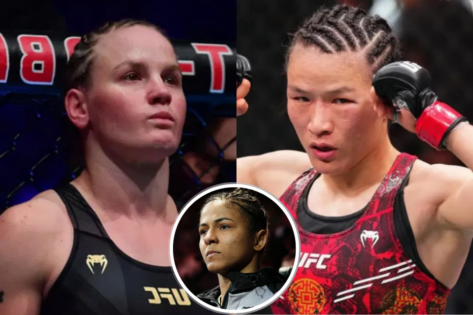Trust, reach, and relatability—these are the three key advantages influencer marketing brings to an organization’s growth strategy. People trust influencers more than traditional ads, and their access to niche communities ensures targeted, cost-effective campaigns. Their authentic content seamlessly blends into social feeds, enhancing brand awareness, engagement, and loyalty. Yet, this remains a distant dream for Major League Rugby (MLR).
If the NBA can tap into millions of Gen Z fans through YouTube stars, why can’t emerging leagues do the same? The NBA’s partnership with mega-influencer Jesser (Jesse Riedel)—who boasts over 30.7 million subscribers—gave fans exclusive behind-the-scenes access and expanded the league’s reach on platforms like YouTube and TikTok. So, what’s holding Major League Rugby back?
In the upcoming episode of the EssentiallySports Think Tank podcast, host Trey Holder chats with Jericho Groenland, Vice President of Marketing at MLR. With 16+ years as a Brand Director at JFG LLC under her belt, Groenland has spent the last two years helping shape MLR’s marketing game. She opens up about the league’s unique hurdles—and why influencer marketing isn’t as simple as copying what the big leagues do.
Uncovering MLR’s Quiet Play in Influencer Marketing
A couple of months ago, former NFL stars Marshawn Lynch and Marcus Peters joined the Seattle Seawolves ownership group—a move that, while not part of a formal marketing campaign, effectively served as influencer marketing. With their massive social media followings, the duo brought substantial attention to Major League Rugby. This development led host Trey Holder to ask the MLR Marketing VP whether influencer marketing plays a role in her strategy.
“We do,” she replied, though with some hesitation. “Influencer marketing as a whole, to me, is really tough just from an ROI perspective, and back to the challenger league life, I don’t have huge budgets.” It’s a fair point—after all, while the NFL dates back to 1920 and the NBA to 1946, MLR only kicked off its inaugural season in 2018.
With limited resources, Groenland has to carefully justify every marketing expense. “I have gotta be able to defend it to say here’s how we made money out of it, here’s how we grew something out of it, and influencer from league level is genuinely harder because there isn’t a lot of proof that I can come right back,” she explained.
However, Groenland does see value in localized efforts. “At a local level, you’ve got a lot of minor teams that will use influencers to sell tickets. And it’s like pop this link. Okay, now, I can say, ‘Kevin sold 500 tickets for me that was good spend, spending money with Kevin,’” she noted.
This pragmatic approach shapes her broader perspective. “It’s a little field of dream-sy: If you build it, they will come.” Despite the challenges, she adds, “We’re working with some great influencers that jump in with us. And some more that we would like to grow.” Still, she admits, “It’s a really hard model to prove.”
While MLR may not lean heavily on traditional influencers just yet, the league’s own athletes are steadily growing their online presence—an emerging opportunity that could pay off in the near future.
Our EssentiallySports Think Tank podcast specializes in offering valuable insights from global industry experts. To catch up on more such interviews, stay tuned as we bring more leaders on our future podcast episodes. This is EssentiallySports Think Tank—Where Sports Meets Smart Content.
The post Influencer Marketing’s Growing Roadblocks: Major League Rugby’s VP Sheds Insights From the Frontlines appeared first on EssentiallySports.



